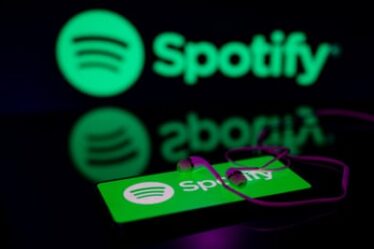Golden Goose Group SpA is seeking to list in Milan in an initial public offering that could value the maker of $500 distressed sneakers at about €3 billion ($3.2 billion) including net debt.
The company, the vast majority of which was bought by private equity group Permira for about €1.3 billion in 2020, is wooing investors as a luxury brand. But it looks more like Dr Martens Plc, in that it’s reliant on a signature shoe style that risks falling out of fashion. Its valuation should reflect this.
True, there are some differences with the British bootmaker, which has had a torrid time since listing in early 2021. Golden Goose has a higher positioning than Dr Martens, selling shoes for up to $2,000 a pair, compared with up to $200 for Dr Martens boots. It’s also less dependent on selling through third-party retailers in the US, which can be volatile.
Part of Golden Goose’s appeal is that the shoes can be customised in its about 190 stores, a draw for younger shoppers, who value individuality, and with whom the brand is popular.
This formula has generated impressive growth, with 2023 sales up 18 percent excluding currency movements to €587 million, and adjusted earnings before interest, tax, depreciation and amortisation up 19 percent to €200 million. Expansion continued in the first quarter of this year, although sales growth slowed to 12 percent while Ebitda was up 17 percent.
The high price point and customisation delivered a full-year 2023 operating margin of 25 percent, around the level of the big luxury groups, excluding the much more profitable Hermes International SCA. Golden Goose is aiming to expand sales to €1 billion by 2029, implying continued growth over the next five years.
But it’s hard to ignore that 90 percent of Golden Goose’s business comes from its “lived-in” looking sneakers. Although casualisation is a long-term trend, fashion is notoriously fickle. Sneaker styles come and go — just look at the pivot from Nike Inc.’s retro basketball shoes to Adidas AG’s Terrace models led by the Samba.
Already, the vogue for quiet luxury has made more formal styles desirable, with the rise of Loro Piana’s Open Walk and Summer Walk slip-ons, and a viral New Balance shoe that’s a cross between a sneaker and a loafer.
Golden Goose is developing a bag range, which is promising. If successful, this could reduce some of the reliance on footwear, to say 70 percent. Given that luxury brands have pushed up prices so much, there is room for appealing, affordable accessories. But as Burberry Group Plc has demonstrated, it’s hard to stand out in this crowded market when a company’s core competence is elsewhere.
Its worth remembering that when Dr Martens — also then owned by Permira — listed, it too was enjoying strong growth on the back of the fad for chunky boots, which had swept the catwalks in the preceding years. Sales rose 15 percent in the year to the end of March 2021, with Ebitda up 21 percent and an operating margin of about 24 percent.
Since then, the company has struggled, issuing five profit warnings in the last 18 months, and dragging the shares down to less than a quarter of their debut price. It has been hurt by some self-inflicted wounds — such as problems at a new Los Angeles warehouse — which Golden Goose will hope to avoid. But it has also been hit by a slowdown in the US, as consumers have cut back.
With the Americas accounting for 41 percent of Golden Goose’s sales (and Europe another 41 percent), this is a risk for the Italian company too. What’s more, it will be exposed to many of the simply comfortable, rather than uber-wealthy, customers who have been reining in their luxury purchases.
Even Birkenstock Holding Plc, whose styles have transcended from fad to fashion staple, and which upgraded its profit outlook on Thursday, has struggled to win over investors. Although the shares are now trading above their $46 debut price, they have dipped below this level on several occasions since the sandal-maker’s IPO in October.
Golden Goose should be priced accordingly. The mooted enterprise value would imply a multiple to Ebitda closer to that of Moncler SpA on roughly 13 times than Dr Martens’ about 8 times.
Given the uncertain luxury backdrop, the question mark over whether fashionistas will continue to flock to Golden Goose and the similarities to Dr Martens, the British company looks a more appropriate valuation peer.
After the boot brand’s dismal performance, neither Permira, which will continue to have a sizable holding in Golden Goose post-IPO, nor new equity investors will want another shoe to drop.
By Andrea Felsted



